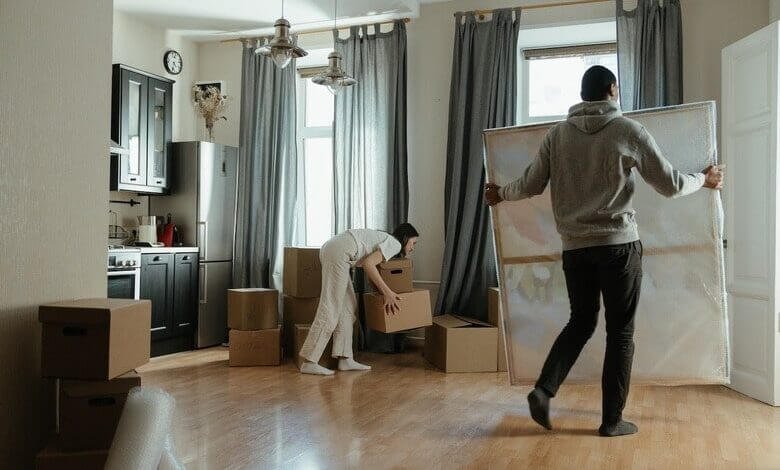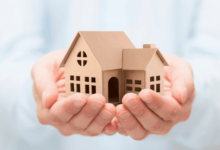Your Checklist For a New Home After Moving In

Moving into a new home is an important milestone in an adult’s life. One can get fully exhausted following a grueling phase of negotiations, signing, inspection, and moving in. If the move is international, the additional logistics and formalities involved can take a toll on you.
According to research by the Association of American Residents Overseas, nearly 40% of people migrate from the USA to Central or South America and Canada. The primary reasons are better job opportunities and quality of life. Some may move from a city like West Palm Beach due to high insurance costs. Coverage is essential in such cities due to the high probability of storms and hurricanes.
Nevertheless, moving to another country is far from easy. Moreover, just as the pre-move phase demands organized planning for a smooth transition to a new space, you must continue the same in the post-move phase to settle into your new home and homeland.
Our checklist for a new home after moving in can help you take all necessary steps to make your move-in organized, safe, and prepared for emergencies.
1. Unpack in Order
Take time to unpack your belongings in your new home. Do not unbox all at once, as that would lead to an overwhelming clutter around the house, which would take longer to put into order. Labeling and numbering your boxes before moving can prove especially beneficial at the time of unpacking, as you will know exactly where each box belongs.
We suggest hiring a reliable moving company to take over the task of packing and shipping your possessions, especially when the move is inter-city, inter-state, or international. With living costs being 17% higher than the national average, make sure you save enough to hire the best West Palm Beach international movers who are well-equipped to handle all the intricacies of an international move with unloading and packing services that make your unpacking hassle-free.
2. Change The Locks
For security and peace of mind, change the locks of all entry points as well as drawers or cupboards where you will be keeping your jewelry or other valuables. Ensure that all windows, back doors, and the garage door, etc., are properly secured. Set up a home security system or update your information with your existing provider.
3. Update Your Address
Let friends and family know that you have moved into your new home. Request mail forwarding with your post office as soon as you move into your new home. Update your mailing address with all subscriptions and online delivery services. Notify your bank, credit card company, healthcare provider, and insurance provider.
4. Locate Critical Functions
Once you have moved into your new home, it is time to know where all the necessary fixtures are. Locate the shut-off valves for the water and gas to be prepared for any emergency leak where you will be required to shut off the supply. Find where the circuit breaker is located, as you may need to replace a fuse or reset a circuit breaker when necessary. Locate the smoke detector and test it for functionality by lighting a few matches or spraying a smoke test aerosol. Do this every two months to ensure they are working. Hire a technician to inspect the heating and cooling units, ducts, and insulation for any maintenance requirements.
5. Baby-Proofing the House
Moving into a new house with babies means there will be a number of safety hazards that need to be addressed. Install child gates at the top and bottom of stairs, and install childproof locks on storage spaces with sharp objects, choking hazards, and toxic products. Hide the electrical outlets with childproof covers, secure blinds and curtain cords, and anchor bookshelves and dressers to the wall. Place finger guards on doors and install window guards or window locks. If you have a fireplace, use a gate or screen to protect your child from fire hazards.
6. Plan an Emergency Response
Create an emergency escape plan in case of a fire, earthquake, flood, or any other disaster. Engage all home residents in the planning so everyone has a clear understanding of what to do in such citations. Decide on the plan of action for when there’s an intruder in the home. Ensure that all residents know the location of the first aid box and the list of emergency numbers.
7. Discover Your Neighbourhood
Acquaint yourself with the new neighborhood. Try chatting up the neighbors during a walk or mailbox run. Find where the trash chute or recycling bin area is located. Locate the nearest grocery store, barber, laundry service, and gas station. Consult apps like Neighborly and Yelp for recommendations and photos for local businesses and service providers. Get contact details for the nearest police station and hospital for emergencies. Find public transportation routes and schedules and look for recreational options available nearby.
8. Personalize Your Space
Make your new home reflect your taste and needs by making a few changes. If the home is a rental, go for options that don’t require modifications in the fittings or fixtures. Use removable wallpaper options that don’t damage walls and stick-on hooks for wall hangings and photo frames. Adding planters and soft furnishings such as rugs and cushions is also a safe choice for home improvements if you’re a tenant.
As a homeowner, you can freely take up design projects to transform your space to meet your aesthetic or storage needs. You can turn the garage into a gym or office, design a custom closet, or revamp your kitchen.
9. Make a Home Maintenance Checklist
Perform regular maintenance checks around the house to save costly repairs later and to keep your new home comfortable. Start by listing all areas and systems that require regular maintenance. These may include landscaping, plumbing, electrical appliances, heating & cooling systems, and the roof. Determine how regularly each of these systems requires your attention: monthly, annually, or with every changing season. Order the tasks according to the need of urgency and allocate a budget for the maintenance. For tasks beyond your DIY scope, find contact details of reliable contractors and service providers.
Conclusion
Whether you are a new homeowner or a new tenant, you can turn your new home into a comfortable residence through mindful actions. Take help from our checklist and start your move-in journey by securing your home, knowing its workings, addressing safety hazards, and preparing for emergencies. Familiarizing yourself with the new neighborhood will help you feel more at home, while a maintenance schedule will help save you from costly surprises later on. Happy Move-in!






